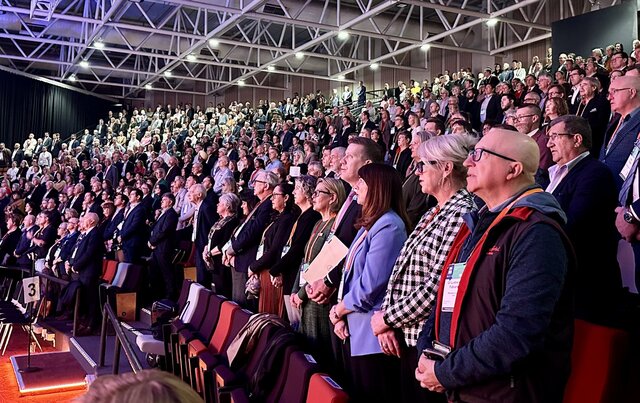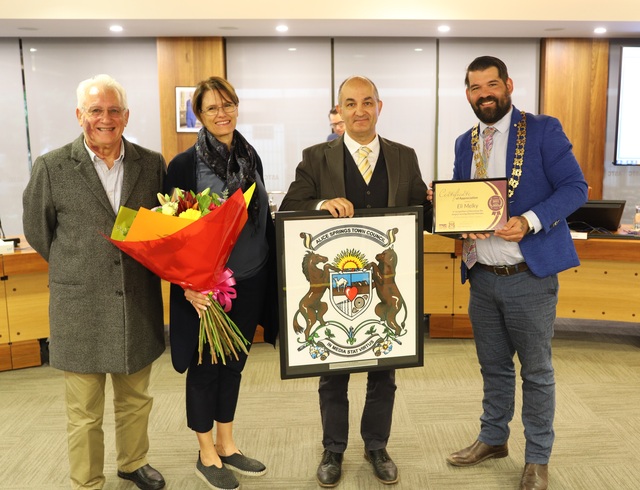Councillor Julie Woodman, City of Salisbury, SA
Q. How long have you been on Council?
I was elected to Council in a by-election in September 2008 –
so I guess you’d say I’m still on training wheels.
Q. Why did you become involved in Local Government?
I have had an interest in Local Government since the 1980s when I was a neighbourhood centre coordinator. It had been in the back of my mind that when I retired I would consider running for Council. But when a vacancy arose in the ward in which I live, friends encouraged me to run and I’m glad to say I have not regretted it for a moment.
Q. Where do you currently work and how does it contribute to your role as a Councillor?
I work as an electorate officer for a State MP, so I guess you’d say I have an instinct for community service. I gain real satisfaction from helping people to help themselves and I’ve been fortunate in being able to call on the support of our wonderful network of social workers in Northern Adelaide. In fact, I’ve been the convenor of an organisation called The Northern Network of Service Providers for the past six years.
Q. What issues are important to you?
You could ask me that question every day for a week and I might have a different answer each day. I worry about the damage being caused to so many individuals, families and the wider community as a result of things such as substance abuse, out of control gambling and violence. More meaningful training opportunities for our youth, home support for the elderly, affordable housing and environmentally sustainable cities all rank highly.
Q. One of Salisbury’s focuses is environmental innovation. What is Council working on in this area?
The City of Salisbury’s Natural Resource Management Policy Direction aims to promote the harvesting and reuse of stormwater and to encourage and promote sustainable land management practices including soils, rivers, coastal and marine ecosystems. Council now has 53 wetlands located throughout the City and 13 of those wetlands are producing recycled water for use on Council reserves. The water is also made available to schools, all residents in new urban areas, commerce and industry. Run as an independent business enterprise, there is no cost to ratepayers.
The Watershed Restaurant and Wetlands Information Centre showcases Council’s numerous achievements in water and environmental management, and over time it will expand its role as an education centre, promoting ways in which the community can move towards greater harmony with the natural environment.
A wind power generator at the Watershed is measuring wind velocities in the area with a view to trialling the generation of power to run a desalination plant. The future aim is to produce drinking quality water for selected industries.
Q. Tell us about the Brahma Green Affordable Housing Project.
In this unique initiative the City of Salisbury is working in partnership with HomeStart Finance and the South Australian Government’s Affordable Housing Innovations Unit to deliver affordable housing on surplus Council owned property, now named Brahma Green. Eleven 7 star energy efficient rated homes are to be constructed on the site for first homebuyers who have a household income of under $59,000 per annum, live in Salisbury and who would otherwise not have been able to enter the home market.
Council does not require payment for the land component of the package from the first homebuyers in the initial transaction, however, when the home is eventually sold, Council will recover the cost of the land at the market value of the day. Owners may otherwise opt to buy out the Council’s share later on if their financial situation permits.
It is hoped that this exciting initiative will encourage other similar affordable housing schemes throughout the country.
Q. What do you most enjoy about being a Councillor?
It is a pleasure and a privilege to be involved in all aspects of community life and I would like to think I can make a positive contribution to the area which has been my home for 36 years. Being on Council has afforded me the opportunity to meet so many interesting and inspiring people from diverse walks of life. I feel very fortunate.
Councillor Peter Jamieson, City of Port Adelaide Enfield, SA
Q. How long have you been on Council?
I was elected to Port Adelaide Enfield Council a little over six years ago.
Q. Why did you become involved in Local Government?
Prior to being elected, I was President of the North Haven Surf Life Saving Club.
I could see the need for the club to become more involved in other community activities apart from our lifesaving duties. I joined the local Residents Association and, as President, was invited to a number of Community Infrastructure Consultations. I also had close involvement with Port Adelaide Enfield Council on a number of beach issues and started to appreciate the good work that my Council was doing for its ratepayers.
The opportunity to become a Councillor came at the 2003 election, when both Councillors decided not to stand in my ward. I stood for Council with the genuine belief that I could help people in their dealings with Council and make decisions that would improve and maximise their quality of life.
Q. What makes your Council area special?
Extending from the ocean to the hills, Port Adelaide Enfield Council is an amalgamation of two distinctively different geographic and demographic councils, and it is one of the largest councils in South Australia. However, I believe that the amalgamation has worked, because there are a number of similarities within each of these areas and, importantly, it gives very good service to its ratepayers because of its relatively large revenue base. Furthermore, the elected members work well together, making good decisions on merit.
Q. Port Adelaide Enfield is home to a number of historical buildings and landmarks. How does Council protect these?
Council has its own local heritage listing in addition to the State Government listing. Our Development Plan has control measures to protect these buildings and to ensure that sympathetic development occurs in Heritage and Contributory character areas.
There are many examples of buildings and landmarks in the Port Adelaide and Enfield areas that are from the very early years of South Australia. In particular, it has been said that Port Adelaide has more heritage buildings per square kilometre than any other area in Australia. This makes Port Adelaide a significant tourist attraction.
Q. Tell us about the work Council is undertaking to revitalise the Port Adelaide Centre.
Council has developed a plan for the revitalisation of the Port Adelaide area. This includes upgrading the streetscape, designating areas for increased housing – including Transit Oriented Development (TOD), and bypassing heavy vehicle traffic out of the area.
Council is lobbying the South Australian Government to change the direction of the proposed electric tram into the Port area, and also to have this area given the highest priority for redevelopment in the SA 30 Year Plan.
Q. What issues are important to you?
All Council issues are important to me, however, climate change and the effect it will have on my ward, which is surrounded on three sides by seawater, and the quality of life for all residents is a major concern. I am also concerned about the number of drownings that have occurred recently on what would be considered by most people as a safe beach at Semaphore.
Q. Tell us about your key achievements on Council.
I was so proud when I was elected in 2003 with high voter support. It gave me even more incentive to do my very best for the ratepayers of my ward and Council.
I was also Deputy Mayor in my first term, which gave me more insight into the operation of Council and more contact with the community.
I am now on the State Executive Committee, which I enjoy because it gives me more insight into the operations of Local Government in South Australia.
An achievement was highlighting the need for and getting Councillor and Council support for, a greater surf lifesaver presence at the Semaphore and Largs beaches, and safety signage on all paths to the beaches. This will make a significant improvement in the amenity of an area increasingly being used
by residents.







